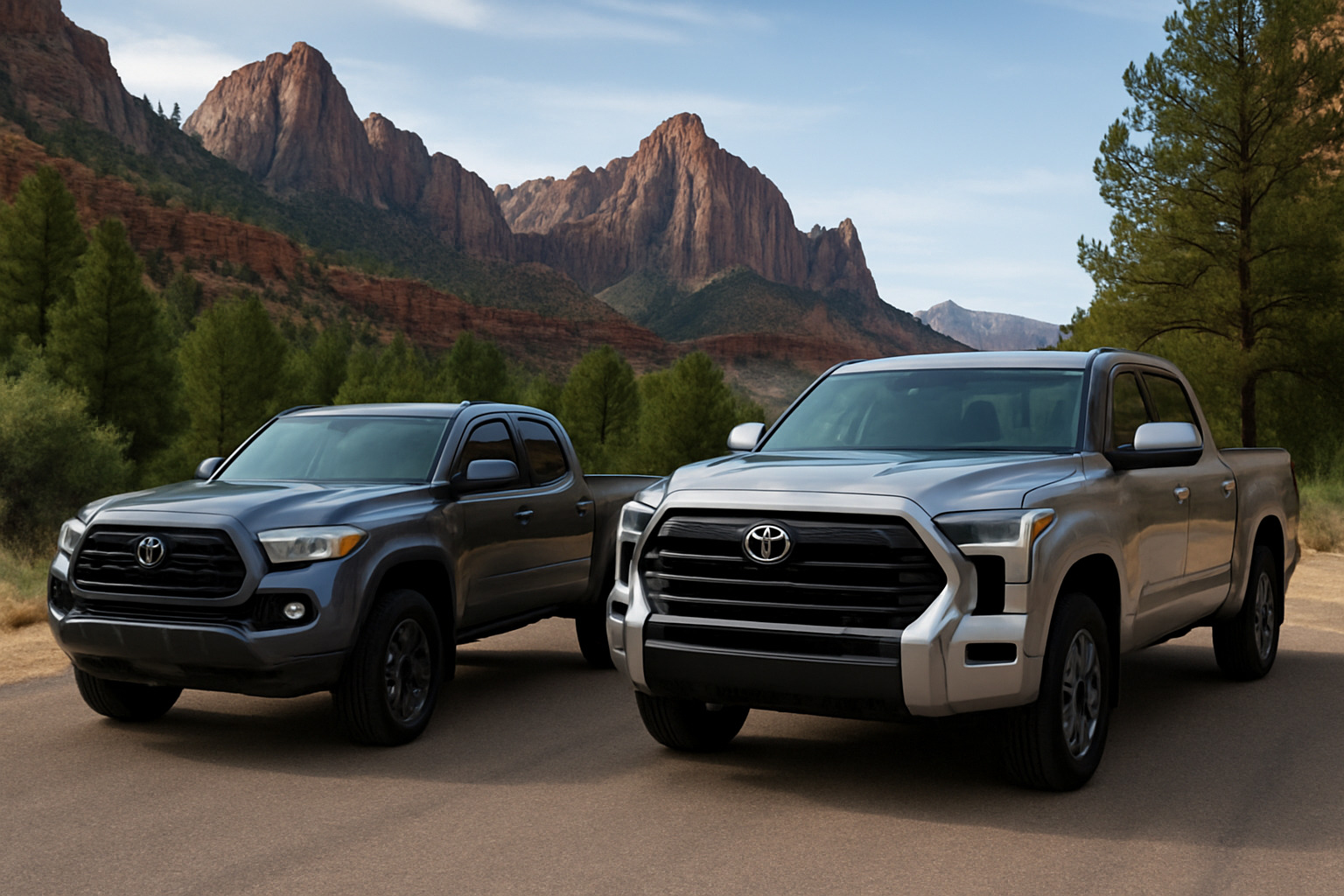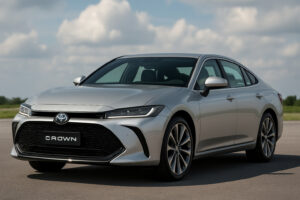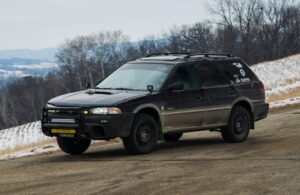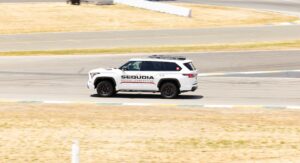Tacoma vs Tundra: 2025 Ultimate Comparison Guide
Choosing Between Toyota’s Truck Titans
Tacoma vs tundra is one of the most common comparisons for truck buyers considering a Toyota purchase. Here’s a quick answer to help you decide:
| Feature | Toyota Tacoma | Toyota Tundra |
|---|---|---|
| Size | Midsize (213-227.4″ length) | Full-size (233.6-252.5″ length) |
| Starting Price (2024) | $31,500 | $39,965 |
| Max Towing | 6,500 lbs | 12,000 lbs |
| Max Horsepower | 326 hp (hybrid) | 437 hp (hybrid) |
| Best For | Daily driving, light towing, off-roading, better fuel economy | Heavy towing, more passenger space, worksite hauling |
When searching for a reliable pickup truck, the choice between Toyota’s two popular models often comes down to your specific needs. The Tacoma vs tundra decision isn’t just about size—it’s about matching the right truck to your lifestyle, budget, and daily tasks.
As one Reddit user put it after switching from a Tacoma to a Tundra: “Once I drove the Tundra TRD Pro, I completely and totally fell in love.” Yet another mentioned missing their Tacoma’s nimble handling despite enjoying the Tundra’s power.
The Tacoma is Toyota’s midsize offering, perfect for those who need a versatile truck that’s easier to park and more fuel-efficient. The Tundra, Toyota’s full-size contender, delivers substantially more power, passenger space, and towing capacity—at a higher price point.
Both trucks offer impressive reliability ratings (Tacoma: 4.6/5, Tundra: 4.8/5 from KBB) and come with Toyota’s reputation for durability. Your choice ultimately depends on whether you need a truck for everyday trips and light duties, or if you regularly tow heavy loads and need maximum capability.

Tacoma vs Tundra: Size, Powertrain & Performance
When it comes to choosing between Tacoma vs Tundra, size matters—a lot. Think of the Tacoma as your athletic, nimble friend who can squeeze through tight spots, while the Tundra is your burly buddy who can move your entire apartment without breaking a sweat.
| Specification | 2024 Tacoma | 2024 Tundra |
|---|---|---|
| Length | 213-227.4 inches | 233.6-252.5 inches |
| Width | Up to 79.9 inches | Up to 81.6 inches |
| Height | Varies by trim | Varies by trim |
| Wheelbase | Varies by configuration | Longer than Tacoma |
| Ground Clearance | 10.8-11 inches | 8.5-9.4 inches |
| Base Engine | 2.4L turbo I4 | 3.4L twin-turbo V6 |
| Base Horsepower | 228 hp | 389 hp |
| Base Torque | 243 lb-ft | 479 lb-ft |
| Max Horsepower (Hybrid) | 326 hp | 437 hp |
| Max Torque (Hybrid) | 465 lb-ft | 583 lb-ft |
I recently chatted with a Tacoma owner from East Petersburg who summed it up perfectly: “I can park my Tacoma in my garage without any overhang, something that wouldn’t be possible with a Tundra.” That everyday practicality is a huge selling point for many midsize truck buyers.
Dimensions & Engine Line-Up
The Tacoma vs Tundra size difference is immediately noticeable when you see them side by side. The Tacoma stretches between 213 and 227.4 inches, depending on how you configure it. The Tundra, meanwhile, commands more real estate at 233.6 to 252.5 inches—that’s nearly two feet longer in some configurations!
For hauling people and gear, the Tacoma gives you Access Cab (extended) and Double Cab (crew) options with either 5-foot or 6-foot beds. The bigger Tundra offers Double Cab and CrewMax configurations with beds ranging from a compact 5.5 feet to a lumber-loving 8 feet.
Under the hood, both trucks show Toyota’s commitment to modern powertrains:
The Tacoma starts with a peppy 2.4L turbocharged four-cylinder making 228 horsepower and 243 lb-ft of torque. Need more oomph? You can step up to the upgraded version with 278 horses and 317 lb-ft, or go all-in with the hybrid i-Force MAX that delivers a impressive 326 horsepower and 465 lb-ft of torque.
The Tundra flexes bigger muscles from the get-go with its standard 3.4L twin-turbo V6 pumping out 389 horsepower and 479 lb-ft of torque. The hybrid i-Force MAX version cranks things up to 437 horsepower and a stump-pulling 583 lb-ft of torque.
What’s cool about both trucks’ hybrid systems isn’t just better gas mileage—they deliver instant electric torque when you need it most, like when you’re pulling away from a stoplight with a trailer or crawling over an off-road obstacle.
Tacoma vs Tundra: Standard vs Hybrid Output
The power difference between these Toyota siblings reflects their intended purposes. The Tacoma vs Tundra comparison is like comparing a versatile multi-tool to a sledgehammer—both are incredibly useful, but for different jobs.
The Tacoma’s base 2.4L turbo engine with 228 horsepower is plenty for everyday driving and moderate work. But the hybrid i-Force MAX version’s 326 horsepower and 465 lb-ft of torque puts it in V8 territory without the thirst for fuel. That’s impressive for a midsize truck!
The Tundra starts where the Tacoma tops out, with its base 3.4L twin-turbo V6 making 389 horsepower and 479 lb-ft of torque. Opt for the hybrid, and you’ll command 437 horsepower and a massive 583 lb-ft of torque—enough to handle serious towing and hauling jobs with ease.
At the gas pump, the Tacoma holds the advantage:
The Tacoma with its gas engine can achieve up to 21 mpg city and 26 mpg highway, while the hybrid version bumps that up to around 23 mpg combined. The Tundra’s gas engine manages up to 18 mpg city and 24 mpg highway, with the hybrid improving to about 22 mpg combined. According to scientific research on fuel economy, these differences can add up to significant savings over years of ownership.
For driving purists, the Tacoma offers something the Tundra doesn’t—a six-speed manual transmission on certain trims. This increasingly rare feature gives drivers more direct control, especially in tricky off-road situations where precise throttle and gear selection matter. As one enthusiast told me, “There’s nothing like rowing your own gears when you’re picking your way through a technical trail.”
Towing, Payload & Off-Road Capability
When comparing tacoma vs tundra capabilities, you’ll find meaningful differences that match their size classes and what they’re built to handle.
The 2024 Toyota Tacoma handles up to 6,500 pounds of towing when properly equipped—plenty for weekend trips with a small boat, camper, or utility trailer. Its payload capacity typically hovers around 1,460 pounds, perfect for hauling gear and supplies for most family outings.
Step up to the 2024 Toyota Tundra, and you’re looking at nearly double the muscle with a maximum towing capacity of 12,000 pounds. This extra strength makes all the difference when pulling larger travel trailers, boats, or work equipment. The Tundra also carries more in the bed with a payload capacity around 1,940 pounds.
Both trucks follow the SAE J2807 towing standard—an industry benchmark ensuring the towing ratings you see aren’t just marketing numbers but capabilities you can count on in real-world conditions. This gives you confidence that your Toyota truck will perform as promised when you’re hauling precious cargo.
Tacoma vs Tundra for Off-Roaders
For trail enthusiasts weighing tacoma vs tundra, both trucks bring impressive off-road credentials to the table, though with different approaches.
The Tacoma has earned its legendary status among off-road enthusiasts, especially in its TRD Off-Road, TRD Pro, and the exciting new Trailhunter trims. Despite being the smaller sibling, the Tacoma actually stands taller in some configurations:
- Tacoma ground clearance: 10.8-11 inches
- Tundra ground clearance: 8.5-9.4 inches (reaching up to 11.2 inches on TRD Pro)
When tackling steep obstacles, the Tacoma TRD Pro’s approach angle of 33.8° and departure angle of 25.7° give it an edge over the Tundra TRD Pro’s 26.2° and 24.2° respectively. Combined with its more compact footprint, the Tacoma simply feels more nimble when navigating tight switchbacks and technical terrain.

The 2024 Tacoma introduces something special for serious off-roaders—IsoDynamic Performance seats that actually reduce the jarring impact of rough trails. Think of them as built-in shock absorbers for your body during those all-day trips.
Both trucks come loaded with impressive off-road technology: Multi-terrain Select lets you dial in the perfect traction setting; Crawl Control works like off-road cruise control for difficult descents; electronic locking rear differentials provide equal power to both wheels when you’re stuck; and FOX internal bypass shocks on TRD Pro models soak up punishment while maintaining control.
The skid plates on both trucks deserve special mention—they’re not just decorative but properly engineered shields protecting your engine, transmission, and transfer case from expensive trail damage. For those dreaming of extended backcountry trips, the new Trailhunter trim on both models comes purpose-built with specialized suspension, recovery points, and integrated overlanding accessories.
Curious about what makes a vehicle truly trail-ready? Check out our guide on Trip-Ready Vehicles.
Trailering & Hauling Breakdown
The tacoma vs tundra towing equation might be the deciding factor for many buyers, as the difference in capability is substantial.
The Tacoma’s 6,500-pound maximum towing capacity hits the sweet spot for weekend warriors. It’ll handle your jet skis, ATVs, small campers, or fishing boats with confidence. Every V6 Tacoma includes a thoughtful towing package with engine and power steering coolers to manage heat during long pulls, a 4/7-pin connector for trailer hookup, and trailer-sway control to keep everything tracking straight.
The Tundra flexes its full-size credentials with that impressive 12,000-pound maximum towing capacity—nearly twice what the Tacoma can handle. This opens up possibilities for larger travel trailers, boats, car haulers, and work equipment. Its comprehensive towing package goes beyond basics with an Integrated Trailer Brake Controller that synchronizes truck and trailer braking, a dedicated Tow/Haul mode that optimizes transmission behavior, and Trailer Backup Guide to make reversing with a trailer surprisingly simple.
One feature families particularly appreciate is the Tundra’s Blind Spot Monitor with Trailer Detection—it extends coverage to include your trailer’s blind spots. The Panoramic View Monitor with trailer view gives you eyes all around your rig, making tight maneuvers less stressful.

A Tundra owner from Reading put it perfectly: “Towing my camper trailer with the Tundra’s V8 makes highway driving a breeze—there’s plenty of power in reserve even on steep grades.”
If your towing needs regularly exceed 6,500 pounds, the Tundra is worth the higher price tag. Its additional power, purpose-built towing features, and heavier-duty construction provide genuine peace of mind when hauling substantial loads—whether that’s for work or play.
Interior, Tech & Everyday Comfort
The cabin experience might be your deciding factor in the Tacoma vs Tundra debate, especially if you spend hours behind the wheel daily.
The 2024 Tacoma has undergone a complete interior change that finally addresses what many owners complained about in previous generations. Gone are the cramped quarters and dated tech, replaced by a more modern, comfortable cabin with quality materials that feel good to the touch. Meanwhile, the Tundra (redesigned in 2022) offers a more premium vibe with noticeably more space to stretch out and upscale touches throughout.
Both trucks feature Toyota’s latest infotainment system, but with some variations in what you get:
- Tacoma: 8-inch touchscreen comes standard, with a tablet-like 14-inch display available on higher trims
- Tundra: Same screen options as Tacoma, but the larger display is available on more trim levels
You’ll find wireless Apple CarPlay and Android Auto standard in both trucks, along with multiple USB ports to keep everyone’s devices charged. If you’re an audiophile, both offer premium sound system upgrades, though the Tundra generally provides more luxury interior options across its lineup, including heated and ventilated seats that aren’t limited to just the top-tier trims.
Tacoma vs Tundra for Families
If you’ve got a family to haul around, the Tacoma vs Tundra interior space comparison becomes especially important.
The Tundra wins the space race hands-down, particularly in its CrewMax configuration. With a generous 42.3 inches of rear legroom, it dwarfs the Tacoma Double Cab’s more modest 32.6 inches. Those extra inches make all the difference when you’re installing bulky car seats or when adults need to ride in back.

Here’s how they stack up dimensionally:
| Interior Dimension | Tacoma Double Cab | Tundra CrewMax |
|---|---|---|
| Front Headroom | 39.7 inches | 39.7 inches |
| Rear Headroom | 38.3 inches | 38.9 inches |
| Front Legroom | 42.9 inches | 42.5 inches |
| Rear Legroom | 32.6 inches | 42.3 inches |
| Seating Capacity | 4-5 passengers | 5-6 passengers |
The Tundra also offers more clever storage solutions throughout the cabin, with larger center consoles and door pockets that can actually hold the water bottles and gear your family brings along. Some Tundra models feature a panoramic moonroof that bathes the cabin in natural light, making the already spacious interior feel even more open and airy.
As one dad from Philadelphia told us, “My teenagers stopped complaining about road trips once we upgraded to the Tundra. The back seat of our old Tacoma was fine when they were little, but now they need that extra space.”
Tech & Safety Highlights
Both trucks come loaded with technology and safety features, though there are some key differences worth noting in the Tacoma vs Tundra comparison.
The 2024 Tacoma actually has a slight edge here, coming with Toyota’s newest Safety Sense 3.0 system, while the Tundra features the slightly older 2.5 version. The Tacoma’s newer system includes all the expected safety features plus Proactive Driving Assist, which provides gentle braking and steering support in certain everyday driving situations.
Both trucks earned the coveted Top Safety Pick+ award from the Insurance Institute for Highway Safety (IIHS), so you can feel confident about crash protection regardless of which truck you choose.
The available 14-inch touchscreen in both models feels thoroughly modern, with crisp graphics and responsive controls that work even if you’re wearing work gloves. Both systems receive over-the-air updates, so your truck’s tech stays fresh without requiring dealer visits.
The Tundra does offer a few exclusive tech goodies not found on the Tacoma, including a digital rearview mirror that gives you a clear view even with a full cargo bed, a head-up display on more trim levels, and a larger 12.3-inch digital instrument cluster (compared to the Tacoma’s 7-inch display). If you tow frequently, the Tundra’s more advanced trailer tech package might seal the deal for you.
Want to learn more about which vehicles make road trips more enjoyable? Check out our guide to the Best Cars for Road Trips for more insights beyond these Toyota trucks.
Ownership Costs, Reliability & Long-Term Value
Let’s talk dollars and cents in the Tacoma vs Tundra comparison, because your wallet cares about more than just the day you drive off the lot.
The 2024 Toyota Tacoma starts at a more accessible $31,500, while the beefier Tundra commands $39,965 to start—that’s about $8,500 you could spend elsewhere. This price gap only widens as you climb the trim ladder:
- Tacoma price range: $31,500 to $52,000
- Tundra price range: $39,965 to $80,000
But the sticker price is just the beginning of your relationship with these trucks. The Tacoma sips fuel more conservatively (up to 26 mpg highway compared to the Tundra’s 24 mpg), which means fewer painful visits to the pump over the years. Your insurance agent will also likely quote you a friendlier premium for the Tacoma, as its lower value and repair costs translate to lower risk.
When it comes to maintenance, both trucks share Toyota’s bulletproof reputation, though the Tundra’s larger engine and components might have your service center charging a bit more when maintenance time rolls around.

The legendary resale strength of Toyota trucks deserves special mention here. The Tacoma has achieved almost mythical status for holding its value—consistently ranking among vehicles that depreciate the least. While the Tundra also performs admirably in the resale department, it doesn’t quite match its smaller sibling’s ability to retain value.
Budgeting Tacoma vs Tundra
When planning your truck budget beyond the purchase price, you’ll want to consider the full financial picture of Tacoma vs Tundra ownership.
Those tempting hybrid powertrains in both trucks come with a premium price tag, but they’ll reward you with better fuel economy and performance. How quickly you’ll recoup that extra investment depends on your driving habits and local gas prices. City dwellers and stop-and-go commuters will see the hybrid’s benefits pay off faster than highway cruisers.
Both trucks come backed by Toyota’s confidence-inspiring warranty coverage:
- 3-year/36,000-mile basic warranty that covers just about everything
- 5-year/60,000-mile powertrain warranty for the heart of your truck
- 8-year/100,000-mile hybrid component warranty (if you go that route)
- 2 years/25,000 miles of complimentary maintenance (oil changes, tire rotations, and more)
The financing math reveals another practical difference. If you’re borrowing $40,000 for a Tundra versus $32,000 for a Tacoma over a typical 60-month term at 5% interest, you’re looking at roughly $150 more in your monthly payment for the bigger truck.
Don’t forget those inevitable dealer fees that sneak onto the final paperwork:
- Delivery, Processing, and Handling fee: $1,095 to $1,795 depending on model
- Documentation fees (which vary wildly depending on which state you call home)
- Those tempting (but optional) dealer add-ons and accessories
I recently chatted with a finance manager at a Toyota dealership who shared some practical wisdom: “Look beyond the monthly payment. Calculate what I call your ‘true monthly ownership costs’ by adding fuel, insurance, and maintenance. Many Tacoma buyers are surprised to find that the lower operating costs offset a good chunk of what they’d save on a lower-priced vehicle.”
For more ways to keep your truck running smoothly and save on maintenance costs long-term, check out our comprehensive Car Maintenance Tips guide.
Lifestyle Fit: Work, Commute & Trip
When deciding between Tacoma vs Tundra, your daily routine and weekend plans might be the most important factors to consider.
The Tacoma’s more compact dimensions make it a natural fit for city life. At 74.4 inches wide compared to the Tundra’s broader 79.9-inch stance, you’ll appreciate the Tacoma when squeezing through narrow streets or hunting for downtown parking. I’ve heard countless owners mention how they can confidently steer parking garages that make Tundra drivers break into a cold sweat.
“I can parallel park my Tacoma in spaces that full-size truck owners just drive right past,” says Maria from Lancaster, who commutes daily to her office job. “And the turning radius is tight enough that I can make U-turns without the three-point shuffle.”
For those whose trucks double as mobile offices, the Tundra flexes its muscles with authority. Its substantially higher towing capacity (12,000 lbs vs 6,500 lbs) and beefier payload rating make it the go-to choice for contractors, landscapers, and anyone who regularly hauls heavy materials. The extra bed space and more powerful engine simply handle work duties with less strain.
Weekend warriors face an interesting Tacoma vs Tundra dilemma that depends on their trip style:
The Tacoma shines when: You’re hitting challenging trails, need to steer tight forest roads, want better fuel economy for long trip drives, or prefer a more nimble vehicle for exploring.
The Tundra excels when: Your trips involve towing boats or campers, you need space for the whole family plus gear, or you’re traveling long highway stretches where comfort and power matter more than maneuverability.
Tacoma vs Tundra for Overlanding
The overlanding community has acceptd both trucks, but the Tacoma vs Tundra comparison reveals different strengths for this increasingly popular pursuit.
The Tacoma has achieved almost legendary status among overlanders, with an aftermarket ecosystem that rivals Jeep Wrangler’s. From roof-top tent mounting systems to custom storage solutions, specialized bumpers to suspension upgrades – if you can dream it for your Tacoma overlanding build, someone probably makes it.
Its more compact footprint allows access to remote backcountry trails where the wider, longer Tundra might struggle. The lighter weight also means less strain on challenging terrain and better fuel economy between distant fill-ups.
The Tundra counters with advantages that become apparent on longer expeditions:
More interior space means you can bring additional supplies or offer comfortable seating for the whole family. Higher payload capacity supports heavier modifications and gear without compromising performance. The more powerful engine maintains highway speeds even when fully loaded with equipment. And the larger fuel tank extends your range between remote gas stations.
Toyota’s new Trailhunter trims for both models show they’re paying attention to the overlanding boom. These factory-equipped trip rigs come with high-clearance bumpers, RIGID Industries LED lighting, ARB Old Man Emu suspension, skid plates, recovery points, and even a bed-mounted air compressor.
As Ryan, who’s overlanded across three continents, told me: “The Tacoma is perfect for technical terrain and solo trips. But when my wife and kids join me for a two-week expedition, the Tundra’s extra space and comfort make everyone happier.”
Tacoma vs Tundra for Daily Commuters
For those who use their truck as a daily driver, several practical factors in the Tacoma vs Tundra decision become crucial.
The Tacoma’s smaller footprint translates to real-world advantages for commuters. It fits standard parking spaces without hanging over the lines, steers drive-thrus without white-knuckle moments, and slips through traffic with greater ease. As James from York put it, “I can park my Tacoma in spots where Tundra owners wouldn’t even bother slowing down.”
Fuel economy significantly favors the Tacoma for daily driving. With the Tacoma gas models achieving 21 mpg city/26 mpg highway and hybrid versions reaching up to 23 mpg combined, you’ll make fewer stops at the pump than with the Tundra’s 18 mpg city/24 mpg highway (or 22 mpg combined for hybrids).
For someone driving 15,000 miles annually, this difference could save Tacoma owners $400-600 per year in fuel costs alone. That’s a nice dinner out every month just from driving the smaller truck.
Ride quality presents interesting tradeoffs. The Tundra generally delivers a smoother highway experience thanks to its longer wheelbase, which better absorbs road imperfections. The Tacoma provides a more connected driving feel that some drivers prefer, though it can feel busier over rough pavement.
Both trucks have made impressive strides in reducing cabin noise in their latest generations, but the Tundra’s larger cabin and additional sound insulation give it a slight edge for quiet highway cruising.
As Sarah, who recently switched from a Tacoma to a Tundra, shared: “I definitely miss how easy the Tacoma was to park at the train station and grocery store. But my back doesn’t ache anymore after my 45-minute commute, and I can actually hear my podcasts without cranking the volume.”
For more insights on choosing the perfect vehicle for your travel needs, check out our guide to Best Trip Vehicles 2024.
Frequently Asked Questions about Tacoma vs Tundra
What are the biggest differences between the Tacoma and Tundra?
When comparing Tacoma vs Tundra, size is immediately obvious – the Tacoma is Toyota’s midsize contender measuring 213-227.4 inches in length, while the Tundra is a full-size beast stretching 233.6-252.5 inches. This size difference affects everything else about these trucks.
The Tundra flexes considerably more muscle under the hood, offering up to 437 horsepower in its hybrid configuration compared to the Tacoma’s still-impressive 326 hp. This power difference translates directly to capability – the Tundra can tow nearly twice as much as its smaller sibling (12,000 pounds vs. 6,500 pounds).
Inside the cabin, you’ll notice the Tundra provides substantially more space, particularly for rear passengers who enjoy significantly more legroom. As one owner from Pittsburgh told us, “My teenagers stopped fighting over who sits in front once we upgraded to the Tundra CrewMax – now they prefer the back seat!”
Of course, these advantages come at a price – the Tundra starts at $39,965, while the Tacoma begins at a more accessible $31,500. For many buyers, this $8,500 difference is the first major consideration in their decision process.
Which model gets better fuel economy, including hybrids?
The Tacoma vs Tundra fuel economy battle has a clear winner – the smaller Tacoma consistently sips less fuel across all configurations. The standard gas-powered Tacoma achieves up to 21 mpg city and 26 mpg highway, outperforming the Tundra’s 18 mpg city and 24 mpg highway ratings.
The hybrid story follows a similar pattern. The Tacoma hybrid delivers up to 23 mpg combined, edging out the Tundra hybrid’s 22 mpg combined figure. While this 1 mpg difference might seem small, it adds up over years of ownership – especially for those who drive frequently.
“I switched from a Tundra to a Tacoma hybrid for my 45-mile daily commute,” shared one forum member from Lancaster. “I’m saving about $60 monthly on fuel alone, which helps offset the car payment.”
It’s worth noting that the fuel economy gap between these siblings has narrowed with recent redesigns. The current Tundra is significantly more efficient than previous generations thanks to its turbocharged and hybrid powertrains replacing the thirsty V8 engines of yesteryear.
Which trims are best for serious off-roading?
For serious trail enthusiasts weighing Tacoma vs Tundra, both trucks offer specialized trims that transform these machines from capable to exceptional off-roaders.
The Tacoma TRD Off-Road hits a sweet spot of affordability and capability with its electronic locking rear differential, Multi-terrain Select system, and Crawl Control that essentially functions as low-speed off-road cruise control. Step up to the TRD Pro, and you’ll gain FOX internal bypass shocks, beefier skid plates, and increased ground clearance that make technical trails much less intimidating.
On the Tundra side, the TRD Off-Road and TRD Pro packages mirror these capabilities but in a larger package. The Tundra’s additional power helps in scenarios like powering through deep sand or climbing steep grades, while the Tacoma’s smaller footprint makes navigating tight switchbacks and dense forest trails considerably easier.
The newest and perhaps most exciting option for trip seekers is the Trailhunter trim available on both models. Developed specifically for overlanding enthusiasts, these factory-built machines come equipped with high-clearance bumpers, auxiliary lighting, ARB Old Man Emu suspension, and specialized tuning for carrying heavier loads over rough terrain for days or weeks at a time.
As one Tacoma TRD Pro owner eloquently put it, “The best off-road trim is the one that matches your trip style. If you’re squeezing through tight canyons in Moab, the Tacoma’s your friend. If you’re crossing the wide-open desert with lots of gear, you might appreciate the Tundra’s extra space and power.”
Conclusion
The Tacoma vs tundra decision isn’t just about picking a truck—it’s about finding the right partner for your lifestyle. After exploring all the details, you’re now equipped to make a choice that aligns with your specific needs, driving habits, and budget.
Both trucks carry Toyota’s bulletproof reliability reputation and hold their value remarkably well over time. But they’re designed to excel in different scenarios, and that’s where your personal requirements come into play.
Choose the Toyota Tacoma if you’re someone who values nimbleness and efficiency. Its more manageable size makes city driving less stressful, and you’ll appreciate the fuel savings on your daily commute. With towing capacity up to 6,500 pounds, it handles weekend toys and small campers with ease. The Tacoma really shines when the pavement ends—its impressive ground clearance and approach angles make it a natural on the trails. And let’s not forget the lower purchase price and operating costs that leave more room in your budget.
The Toyota Tundra is your go-to if serious hauling is in your future. When you regularly need to tow more than 6,500 pounds—whether it’s a larger boat, horse trailer, or work equipment—the Tundra’s robust powertrain delivers with confidence. The spacious cabin, especially in CrewMax configuration, keeps passengers comfortable on long trips with genuinely adult-friendly rear seats. That twin-turbo V6 (standard or hybrid) provides substantial power that makes highway merging and mountain driving effortless, while the longer wheelbase translates to a smoother ride quality.

As we’ve seen countless times at Car News 4 You, truck owners develop deep connections with their vehicles. One reader wrote to us: “My Tacoma has taken me places I never thought possible—from Moab’s slickrock to camping spots that aren’t even on the map.” Another shared: “Pulling my 30-foot travel trailer with my Tundra gives me complete peace of mind, even in crosswinds or mountain passes.”
The best way to make your final decision is to spend time behind the wheel of both. Pay attention to how each truck feels during your test drive—how it handles, how comfortable you feel in the cabin, and whether you can easily see out of it. Bring your family along if they’ll be regular passengers, and try parking in spaces you typically use.
Whether you choose the versatile Tacoma or the powerful Tundra, you’re getting a truck built on decades of Toyota’s engineering expertise and real-world testing. Either one will likely serve you well for many years and trips to come.
For more inspiration on matching the right vehicle to your outdoor lifestyle, check out our comprehensive guide to the Best Cars for Outdoor Trips.







